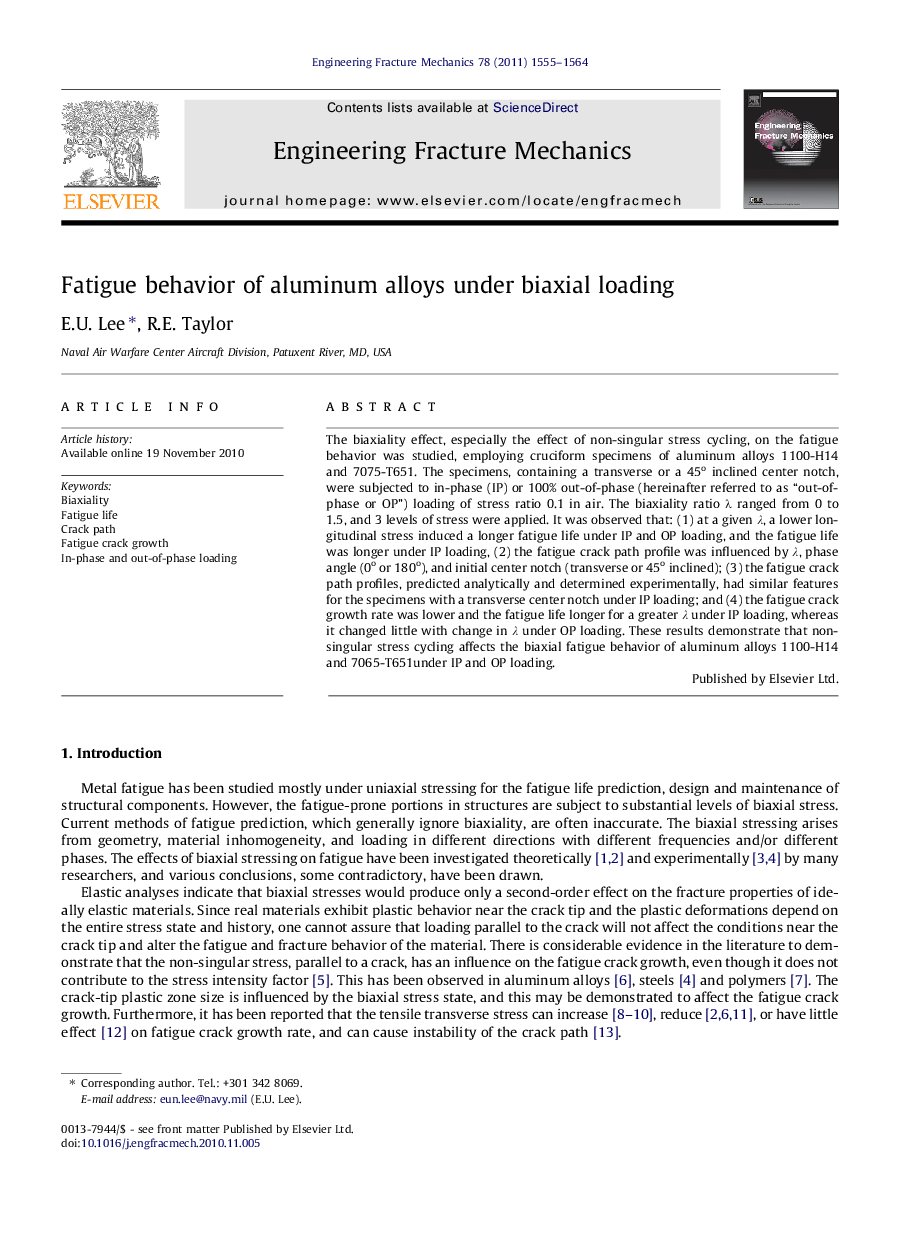| Article ID | Journal | Published Year | Pages | File Type |
|---|---|---|---|---|
| 771130 | Engineering Fracture Mechanics | 2011 | 10 Pages |
The biaxiality effect, especially the effect of non-singular stress cycling, on the fatigue behavior was studied, employing cruciform specimens of aluminum alloys 1100-H14 and 7075-T651. The specimens, containing a transverse or a 45o inclined center notch, were subjected to in-phase (IP) or 100% out-of-phase (hereinafter referred to as “out-of-phase or OP”) loading of stress ratio 0.1 in air. The biaxiality ratio λ ranged from 0 to 1.5, and 3 levels of stress were applied. It was observed that: (1) at a given λ, a lower longitudinal stress induced a longer fatigue life under IP and OP loading, and the fatigue life was longer under IP loading, (2) the fatigue crack path profile was influenced by λ, phase angle (0o or 180o), and initial center notch (transverse or 45o inclined); (3) the fatigue crack path profiles, predicted analytically and determined experimentally, had similar features for the specimens with a transverse center notch under IP loading; and (4) the fatigue crack growth rate was lower and the fatigue life longer for a greater λ under IP loading, whereas it changed little with change in λ under OP loading. These results demonstrate that non-singular stress cycling affects the biaxial fatigue behavior of aluminum alloys 1100-H14 and 7065-T651under IP and OP loading.
